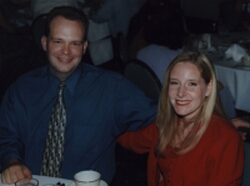New Yorker?
yeah.
I was shocked too.
But I'm quoting a New Yorker piece on Prescription Drugs:
The “intolerable” prices that Angell writes about are confined to the brand-name sector of the American drug marketplace. As the economists Patricia Danzon and Michael Furukawa recently pointed out in the journal Health Affairs, drugs still under patent protection are anywhere from twenty-five to forty per cent more expensive in the United States than in places like England, France, and Canada. Generic drugs are another story. Because there are so many companies in the United States that step in to make drugs once their patents expire, and because the price competition among those firms is so fierce, generic drugs here are among the cheapest in the world. And, according to Danzon and Furukawa’s analysis, when prescription drugs are converted to over-the-counter status no other country even comes close to having prices as low as the United States.andIt is not accurate to say, then, that the United States has higher prescription-drug prices than other countries. It is accurate to say only that the United States has a different pricing system from that of other countries. Americans pay more for drugs when they first come out and less as the drugs get older, while the rest of the world pays less in the beginning and more later. Whose pricing system is cheaper? It depends. If you are taking Mevacor for your cholesterol, the 20-mg. pill is two-twenty-five in America and less than two dollars if you buy it in Canada. But generic Mevacor (lovastatin) is about a dollar a pill in Canada and as low as sixty-five cents a pill in the United States. Of course, not every drug comes in a generic version. But so many important drugs have gone off-patent recently that the rate of increase in drug spending in the United States has fallen sharply for the past four years. And so many other drugs are going to go off-patent in the next few years—including the top-selling drug in this country, the anti-cholesterol medication Lipitor—that many Americans who now pay more for their drugs than their counterparts in other Western countries could soon be paying less.
The second misconception about prices has to do with their importance in driving up over-all drug costs. In one three-year period in the mid-nineteen-nineties, for example, the amount of money spent in the United States on asthma medication increased by almost a hundred per cent. But none of that was due to an increase in the price of asthma drugs. It was largely the result of an increase in the prevalence of usage—that is, in the number of people who were given a diagnosis of the disease and who then bought drugs to treat it. Part of that hundred-per-cent increase was also the result of a change in what’s known as the intensity of drug use: in the mid-nineties, doctors were becoming far more aggressive in their attempts to prevent asthma attacks, and in those three years people with asthma went from filling about nine prescriptions a year to filling fourteen prescriptions a year. Last year, asthma costs jumped again, by twenty-six per cent, and price inflation played a role. But, once again, the big factor was prevalence. And this time around there was also a change in what’s called the therapeutic mix; in an attempt to fight the disease more effectively, physicians are switching many of their patients to newer, better, and more expensive drugs, like Merck’s Singulair.
All told, prescription-drug spending in the United States rose 9.1 per cent last year. Only three of those percentage points were due to price increases, however, which means that inflation was about the same in the drug sector as it was in the over-all economy. Angell’s book and almost every other account of the prescription-drug crisis take it for granted that cost increases are evidence of how we’ve been cheated by the industry. In fact, drug expenditures are rising rapidly in the United States not so much because we’re being charged more for prescription drugs but because more people are taking more medications in more expensive combinations. It’s not price that matters; it’s volume.
The fact that volume matters more than price also means that the emphasis of the prescription-drug debate is all wrong. We’ve been focussed on the drug manufacturers. But decisions about prevalence, therapeutic mix, and intensity aren’t made by the producers of drugs. They’re made by the consumers of drugs.
This is why increasing numbers of employers have in recent years made use of what are known as Pharmacy Benefit Managers, or P.B.M.s. The P.B.M.s draw up drug formularies—lists of preferred medications. They analyze clinical-trials data to find out which drugs are the most cost-effective. In a category in which there are many equivalent options, they bargain with drug firms, offering to deliver all their business to one company in exchange for a discount. They build incentives into prescription-drug plans to encourage intelligent patient behavior. If someone wants to take a brand-name oral contraceptive and there is a generic equivalent available, for example, a P.B.M. might require her to pay the price difference.



0 Comments:
Post a Comment
<< Home